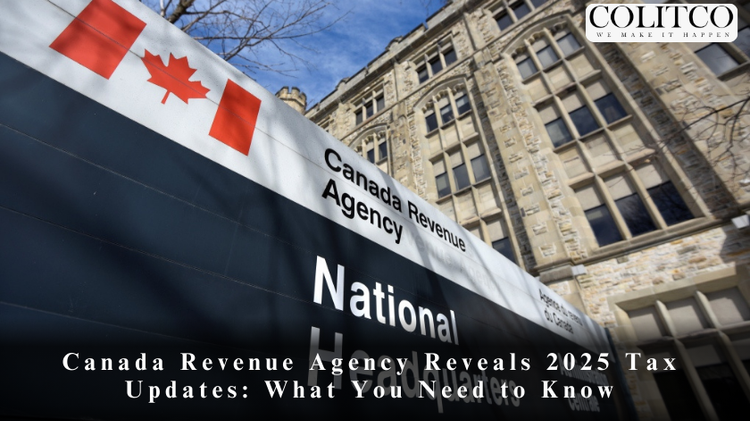Canada Revenue Agency Reveals 2025 Tax Updates: What You ...

The Canada Revenue Agency (CRA) has unveiled the new 2025 tax brackets and updates for Canadians. These changes include adjustments to income tax brackets, contributions to the Canada Pension Plan (CPP), Registered Retirement Savings Plan (RRSP) limits, and Tax-Free Savings Account (TFSA) thresholds. Here’s an overview of the key updates to help you plan for the coming year.
2025 CRA Income Tax BracketsThe CRA has indexed the 2025 income tax brackets to a 2.7% inflation rate, significantly lower than last year’s 4.7%. The new federal tax brackets for 2025 are:
Income up to $57,375: 15%Income from $57,375 to $114,750: 20.5%Income from $114,750 to $177,882: 26%Income from $177,882 to $253,414: 29%Income above $253,414: 33%Provinces will also adjust their tax brackets, although inflation rates may vary regionally.
Basic Personal Amount IncreaseThe Basic Personal Amount (BPA), which determines tax-free earnings, will rise to $16,129 for 2025. Individuals earning up to this amount will pay no federal income tax. For higher earners, the BPA gradually reduces once income exceeds $177,882 and fully phases out above $253,414.
For taxpayers in the top bracket, the indexed BPA remains $14,538, providing a non-refundable federal tax credit of $2,181.
CPP Contribution ChangesCPP contribution rates for 2025 will stay at 5.95% for employees and employers. However, the Year’s Maximum Pensionable Earnings (YMPE) will increase to $71,300. The 2025 maximum employee contribution will be $4,034.10, with the same amount for employers.
Self-employed individuals will contribute at a rate of 11.9%, with a maximum contribution of $8,068.20.
Second CPP Contribution TierIn 2024, a second CPP contribution tier was introduced. This affects workers earning above the first ceiling. In 2025, earnings between $71,300 and $81,200 will attract an additional contribution rate of 4% for employees and employers.
The maximum additional contribution for employees is $396, with the self-employed rate doubling to 8%, capped at $792.
Employment Insurance PremiumsEmployment Insurance (EI) premiums will rise slightly in 2025. The employee contribution rate will increase to 1.64% on insurable earnings up to $65,700. This sets the maximum EI contribution at $1,077.48. For Quebec residents, the rate will remain lower at 1.31%, with a maximum contribution of $860.67.
2025 TFSA LimitThe Tax-Free Savings Account (TFSA) contribution limit for 2025 will remain $7,000. This amount reflects inflation adjustments since the TFSA’s introduction in 2009. Although the indexed TFSA dollar figure is $6,963 for 2025, the limit is rounded to the nearest $500 increment.
RRSP Limit IncreaseThe RRSP contribution limit will rise to $32,490 for 2025, up from $31,560 in 2024. This limit is subject to 18% of earned income from 2024, including employment and rental income, plus any unused contribution room from previous years. Pension adjustments may further affect individual limits.
Old Age Security ThresholdsThe Old Age Security (OAS) repayment threshold will increase to $93,454 for 2025. Individuals earning above this amount will see a reduction in their OAS payments.
Prescribed Interest Rates DropThe CRA’s prescribed interest rate will decrease to 4% in the first quarter of 2025. This rate applies to taxable benefits, low-interest loans, and related-party transactions.
If the CRA owes you a refund, the rate will increase to 6%. However, tax debts, penalties, and unpaid instalments will incur an 8% interest rate.
Planning Ahead with the 2025 CRA Tax BracketsThe 2025 CRA tax brackets provide an opportunity to review your financial plan. With indexed adjustments, Canadians can optimise contributions to TFSAs and RRSPs and prepare for increased CPP and EI premiums.
Understanding how the Canada Revenue Agency 2025 tax brackets impact earnings and benefits is essential. The updated figures ensure Canadians can adapt to inflation while planning for retirement and managing taxable income.
Stay informed about further updates and consult a tax professional if needed to navigate these changes effectively.
Visited 17 times, 17 visit(s) today











































